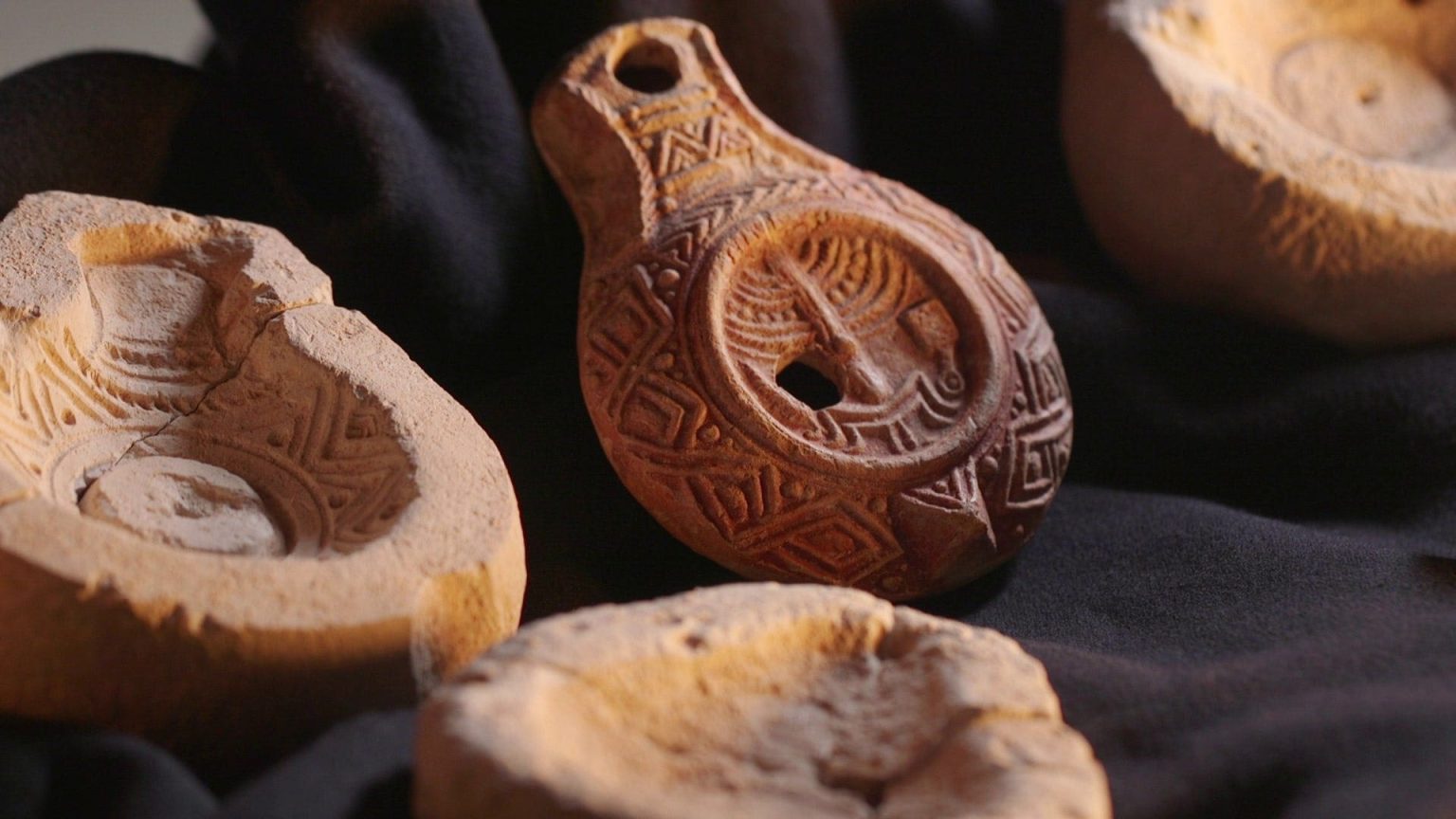The Israel Antiquities Authority (IAA) has unveiled a remarkable discovery, an intricately carved oil lamp dating back to the fourth century CE, unearthed near the Mount of Olives in Jerusalem. This exquisite artifact offers a rare glimpse into the lives of Jews living in the region during the Late Roman Empire, a period shrouded in relative obscurity. The lamp’s discovery, announced just in time for Hanukkah, the Jewish Festival of Lights, resonates with particular significance. Its surface bears detailed carvings of a menorah (a seven-branched candelabrum), an incense shovel, and a lulav (a date palm frond used during the Jewish festival of Sukkot). These symbols, deeply intertwined with Jewish religious practices and the memory of the Second Temple, suggest the lamp’s owner held a strong connection to Jewish faith and heritage.
The lamp’s survival across nearly two millennia is a testament to the craftsman’s skill and the enduring power of religious symbolism. Soot marks on the lamp’s nozzle provide tangible evidence of its use, transporting us back to a time when its flickering flame illuminated the lives of its owners. The IAA emphasizes the lamp’s exceptional condition and artistic merit, factors that contribute to its rarity and historical value. The discovery is particularly significant given the limited knowledge surrounding Jewish life in Jerusalem during the fourth century.
The lamp’s provenance adds another layer of intrigue. Following the Bar Kokhba revolt’s suppression in 135 CE, Jews were expelled from Jerusalem by the Roman emperor Hadrian. This expulsion created a historical void, obscuring the lives of Jews who remained in the region or returned later. The Mount of Olives lamp stands as a physical testament to a Jewish presence in Jerusalem during the 3rd-5th centuries CE, offering a tangible link to a period often overshadowed by the events of the Bar Kokhba revolt and its aftermath.
The lamp’s intricate design reflects the dedication and craftsmanship of its creator. IAA Research Archaeologist Benjamin Storchan highlights the meticulous process involved in the lamp’s creation. The craftsman employed a technique involving intricately carved limestone molds, utilizing drills and chisels to achieve the detailed depictions of the menorah, incense shovel, and lulav. These molds, consisting of upper and lower halves, were used to press clay, forming the lamp’s shape and imprinting the symbolic designs.
Storchan speculates that the lamp’s owner likely purchased it due to their religious beliefs and as a tribute to the memory of the Second Temple, which had been destroyed centuries earlier. This hypothesis underscores the lamp’s function not merely as a utilitarian object but as a tangible expression of faith and cultural memory. The symbols carved upon it served as constant reminders of the Jewish connection to the Temple and their religious heritage.
The discovery of the oil lamp offers valuable insights into the daily lives and religious practices of Jews during a period of Roman rule and religious transition. The Late Roman Empire witnessed the rise of Christianity as the favored religion, leading to the decline of Roman polytheism. Despite facing persecution under Roman rule, a Jewish community persisted in the region, as evidenced by this remarkable artifact. The lamp illuminates a fragment of their story, showcasing their resilience and adherence to their faith amidst challenging circumstances. The lamp’s public display at the Jay and Jeanie Schottenstein National Campus for Archaeology in Jerusalem allows visitors to connect with this piece of history, particularly poignant during the Hanukkah season.















